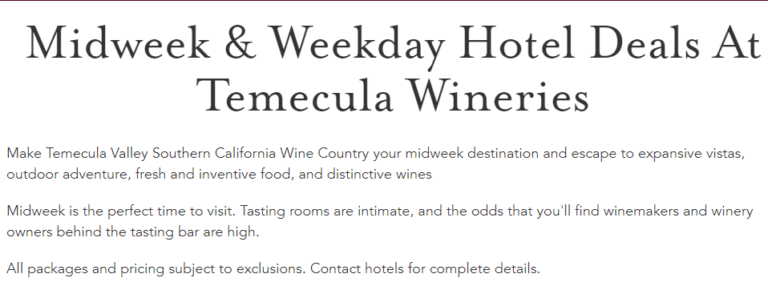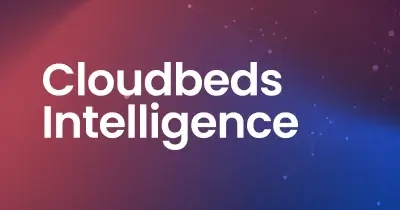
By Cloudbeds
Hoteliers and hosts are always on the lookout for new ways to maximize revenue, but achieving peak earnings requires implementing the right hotel pricing strategy at the right time. The key to an effective hotel revenue strategy could be making room rate adjustments based on demand and market segments in conjunction with other strategic changes.
Let’s dive into other key factors that will help you take the guesswork out of your hotel room pricing strategy.
Considerations when developing your hotel’s pricing strategy
- Property Location
- Target Market
- Level of competition
- Property Size
- Services offered
- Upsell opportunities
The first step to creating successful pricing strategies in the hotel industry is to understand the market and meet its demands. You also need to be aware of your guest segments and their needs and expectations.
When it comes to your guest demographic, you must conduct market segmentation to understand where your demand comes from and the specific factors that play a role in the seasonal demand of your hotel.
For example, have you noticed more business travelers demanding single rooms during the winter months and families requesting suites in the summer? You can refer to your property management system (PMS) or OTA reports to give you a clearer view of your customer demographics data. Another tactic is to use Google Analytics or other BI tools to track business and segments coming to your property.
Beyond understanding your market, you need to observe the competition. Competitor-based pricing should be a part of what drives your hotel pricing strategy and decision-making on competition pricing parity, discounts, and advertising. You can start by analyzing your top competitors and researching everything from their location, amenities, cancellation policy, and price points. Make sure to shop their different rates in different seasons to see what offers/promotions they’re running and when they increase or drop their rates.
An increase in competitor prices could mean that you need to adjust your rates accordingly. Keep an eye out for an increase in demand and a lack of inventory in competitor properties, as this could also indicate an opportunity for you to adjust your pricing. For deeper insight into your market, competition, and your property’s performance (including segmentation of your business), use hotel pricing software.
9 effective pricing strategies
There is no one-size-fits-all hotel revenue management strategy that will work for every property. Instead, we recommend you utilize a combination of different strategies depending on your local market’s trends, yield goals, historical data, and targeted demographic.
In fact, the complexity behind setting rates attracted Jason Pinto, Co-Founder and COO at Pace Revenue, to the hospitality industry. In this clip from The Turndown Podcast, Jason explains all the factors involved in setting pricing and how the industry is still behind in adopting technology.
Here are some hotel pricing strategy examples to try out.
1. Open pricing
Open pricing is an ideal option for hotels operating independently. Essentially, open pricing involves setting rates for distribution channels, room types, and dates that are independent of each other. This luxury of choice allows hotels to forecast more accurately.
2. Value-added pricing
With this pricing strategy, you can set a higher rate than your competitor’s pricing because you’ll be offering additional services in the basic package (i.e., organic soaps/shampoos or other package inclusions). The extra perks can be services or items.
3. Discount pricing
This approach is used to boost occupancy during off-seasons by dropping base rates. Although you will be dropping your base rates with discount codes for the lean season, hotel revenue can be made up through upselling or cross-selling.
4. Segment-based pricing
This strategy involves offering the same product at different prices depending on the different types of customer segments. With price-per-segment pricing, your rates can be lower if the guest commits to either booking a certain number of rooms or a specific length of stay.
5. Length of stay pricing
This strategy consists of adjusting your pricing based on the length of the stay. You can implement a rule where guests who stay a minimum number of days will receive a discount. A promotion like this helps you increase occupancy rates on slow nights and increase occupancy during periods with low demand.
6. Positional pricing
This is a strategy where your price is based on your brand’s strength, position in the market, and reputation. Positional pricing makes it essential to assess and choose your brand’s market position wisely.
7. Dynamic pricing
A dynamic pricing strategy will rely on market demand and fluctuations to set the optimal price. It’s often used to charge a higher price during high demand. Generally, a hotel room rate is increased during peak periods when demand exceeds supply to capitalize on ADR and lowered when demand is weak to increase occupancy.
8. Penetration pricing
One of the hotel industry pricing strategies used during the initial offering period. These initial lower prices allow you to penetrate the market and attract customers away from your competitors.
9. Occupancy-based pricing
Occupancy-based pricing adjusts room rates based on the number of occupants in a room. For example, a hotel may have a base rate for one guest and an additional charge for every extra guest. This helps cover operational costs and increases revenue per available room (RevPAR).
5 hotel pricing best practices
After you’ve determined your pricing strategy or combination of strategies for low and peak season, it is crucial to continuously monitor market demands and your competitor’s pricing to remain one step ahead.
Here are 5 best practices to create healthy profit margins and increase revenue.
1. Maximize midweek bookings
An often-overlooked pricing strategy at hotels is to increase midweek bookings. There are many ways to do this; however, it’s not as simple as offering a lower rate. While this may attract more business, it won’t be good for the long-term health of your business.
Look to add value for your clients. Create packages and use clever distribution techniques. Here are some ideas for where to start:
- Create an email marketing and loyalty program utilizing previous guest data to attract repeat guests
- Take advantage of reservations made Friday through Sunday and offer an extended stay of one or two nights at a lower room rate
- Develop relationships and collaborate with other local businesses to offer special promotions and giveaways for a midweek stay
- Offer special packages and discounts to midweek guests on both OTAs and your website
- Capitalize on local midweek events by promoting your hotel as the best place to stay. You can even create a social media post using the event’s hashtag to get more visibility
For example, the hotels in the Temecula Wineries destination collectively participate in midweek and weekday hotel deals as an incentive to attract more guests to the area. Each hotel is then responsible for creating its own special offer.

2. Run effective promotions
One way to get ahead of your competition when demand is low is by using promotions, discounts, and special deals. When demand is slowing down, these deals can be used to attract more bookings.
You can start getting ahead of the game by offering things like spa or restaurant incentives, hotel room discounts, multiple-night discounts, free nights, etc. By adding these short promotional bursts into your hotel pricing strategy, you’ll gain some traction in bookings and avoid your hotel being perceived as low-quality or constantly discounting. It’s also a great way to improve the guest experience.
For example, FieldHouse Jones offers discounts and evening events at its onsite cafe, restaurant, and slot car racing space. This way, they depend not only on guests for an inflow of hotel revenue but also bring in added profits from the local community. This tactic also has the added benefit of providing guests with an authentic travel experience since they get to intermix with the local community; it’s a win-win for everyone.
3. Sell last-minute inventory effectively
Hotel industry statistics show a significant increase in last-minute reservations with very short booking windows (i.e., the time between a booking and check-in). Many of these are made on mobile devices, so there’s a huge opportunity for more direct bookings for hotels with a mobile-friendly booking engine.
The best way to sell off these last-minute rooms is through online travel agents (OTAs) via a channel manager. This creates a seamless two-way connection to your hotel’s various booking sites, like Booking.com, Expedia, or Airbnb, and ensures that the constant flow of information is reliable and up to date.
Additionally, you can make informed hotel pricing decisions by monitoring your competitor’s rates in real time to ensure those final rooms are sold without compromise.
4. Use data-based forecasting
In the fast-paced hotel business, having real-time data can mean the difference between getting ahead of your competition or being left in the dust. Without a PMS system that provides reliable, real-time data on your guests and business, you won’t be able to track the information crucial to building a successful hotel pricing strategy. Having the most up-to-date data at your fingertips allows you to assess market trends so that you can react faster and more accurately.
5. Use revenue management technology
The hospitality industry is no stranger to innovation in revenue management systems, with solutions ranging from highly specialized tools for revenue managers to easy-to-use platforms for the needs of smaller properties. No matter what type of system you choose, an RMS provides data-backed suggestions so that hoteliers sell the right room to the right guest at the right price to maximize occupancy, revenue, and profitability.




















